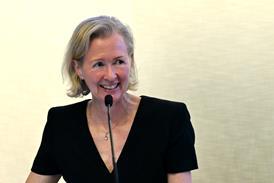If the Law Society wants its current reforms to hold any weight with the profession, it needs to revamp its image, says Christopher Digby-Bell
In a year's time, the Law Society will have a new system of governance and a reconstituted council as its governing body - but will anyone notice the difference?
In all the talk about modernisation, there has been little about image. But the Law Society has always had a blind spot when it comes to seeing how others look at it. The Society needs to reach out to the 81% of the profession who did not participate in its 'Have Your Say' consultation and to the 84% who ignored the previous attempt at reform in 2001. Image is vital to securing the profession's support for the new Law Society.
I say 'new', but there is to be no New Labour-style revolution. Instead, we are heading towards a refurbishment of the old Law Society, with a new logo and a slightly smaller council. Not quite the progressive, lean, mean, representative machine the profession has been led to expect.
You cannot shape the future if you are stuck in the past. With 80% of solicitors under the age of 35 and largely disengaged, the challenge is to create a bold vision of a governing body freed from the shackles of regulation and complaints-handling and rediscovering its voice as the profession's trade union.
The new council will have three key roles - representation, member services and law reform. But how can these best be delivered? So far, the debate has been centred on the size, rather than the function, of the council. It seems reluctant to reduce its size much from 100 members for fear of losing legitimacy by appearing to be unrepresentative. But the larger the body, the smaller its effectiveness. It becomes a debating chamber more in the nature of an advisory committee.
The inconvenient truth is that for all the talk about the need for a large council in order to be inclusive of the whole profession, recent research shows that only 14% of the profession have any active involvement with their local law societies and that only 25% opt in to the specialist groups.
A council of about 75 - as has been proposed - is just tinkering at the edges and will do nothing to win over hearts and minds. Nor will it be enough to restore to the council the power over policy making that has been usurped by the Chancery Lane executive. This is the opportunity for the council to re-take control by creating a strong body of 30 members populated by skilled and experienced big hitters who will not allow themselves to be pushed around. They could be supported by an executive committee of six members with delegated oversight of finance and operations headed by a president elected in a public ballot of the profession. No more part-time leaders selected by Buggins' turn.
The Law Society's opposition to the government has been like candyfloss - it has looked substantial, but has melted on contact. A re-energised council would expose Carter as no more than a government hit-man dressed up to look like a management consultant, and would insist that Lord Falconer delivers on his promise of light-touch regulation.
The Law Society was once regarded as the Eddie the Eagle of professional bodies. If we can make it soar, the profession will cheer and the government will have to watch out.
Christopher Digby-Bell is chief executive and general counsel of London-based Palmer Capital Partners and Law Society Council member for Cambridgeshire and Bedfordshire
Charity Explorer provides a reputable reference tool for solicitors, will-writers and their clients who want to leave a legacy or charitable gift.
Visit Charity Explorer
Whether you are looking for legal expert witnesses, legal training/CPD providers, international law firms, administration of estates, legal software suppliers, barristers chambers or any other general legal service, the Legal Services Directory will provide a suitable option.
Visit Legal Services Directory

























No comments yet